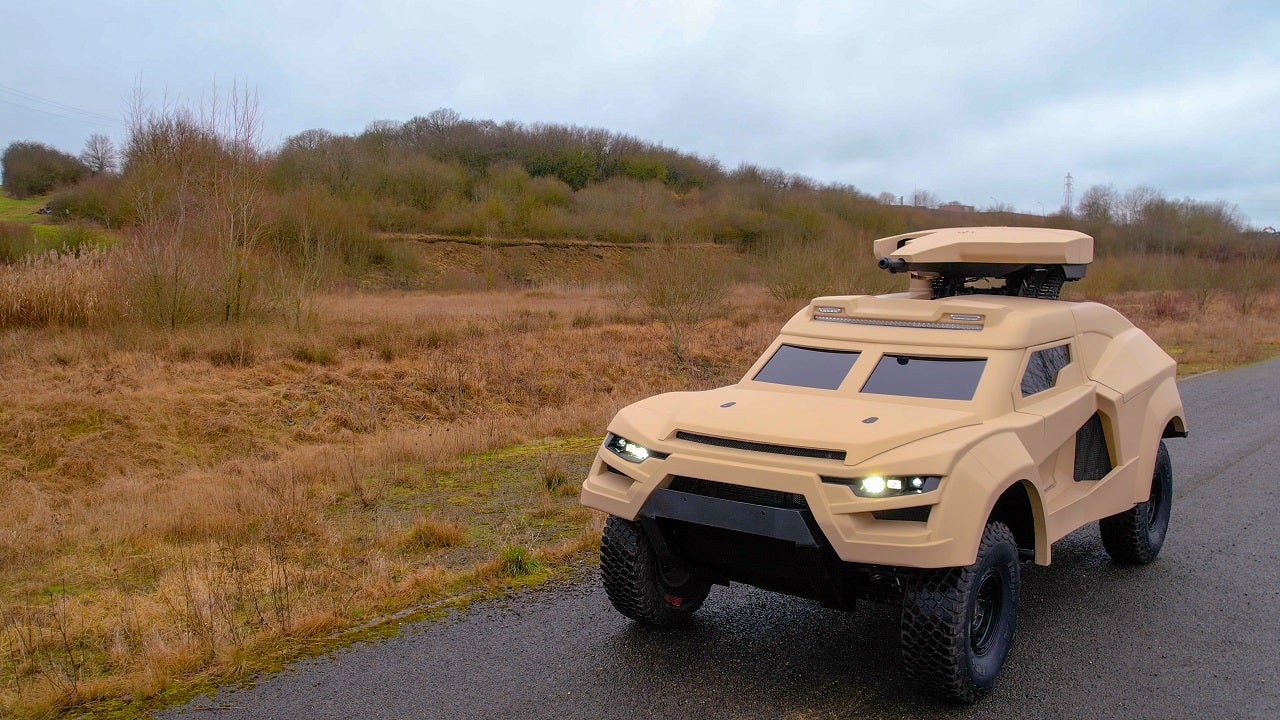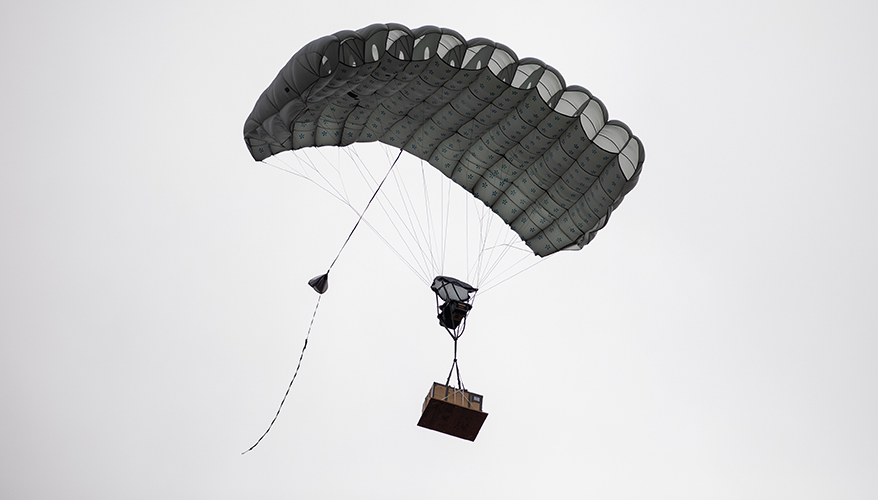Army Experiments With Next-Gen Aerial Resupply
12/21/2022
By
Mikayla Easley
Defense Dept. photo
FORT IRWIN, California — To improve the Army’s ability to move supplies into future battlefields, the service is experimenting with new technologies for its contested logistics strategy.
The Army recently tested how the Joint Precision Aerial Delivery System, or JPADS, could deliver critical supplies directly to soldiers in austere environments where they may be unable to use GPS to locate supply packages. The system was one of two dozen logistics technologies tested during the service’s annual Project Convergence 2022 experiment in late fall, said Col. Marchant Callis, the Army’s sustainment capabilities development and integration director.
The experiment is helping bring the service’s sustainment efforts into the 21st century by conducting missions “over increasingly dispersed footprints and across contested, degraded or denied environments,” Callis said during a demonstration at Project Convergence.
The services already use JPADS in operations today. The system comes in two variants — one able to carry 2,000 pounds of supplies and a 10,000-pound version — that are typically launched from a C-130 aircraft from altitudes up to 24,500 feet and around 15 miles from the target destination, Callis said.
Once dropped, an onboard computer uses GPS-designated coordinates to autonomously steer a parachute that delivers the palletized load. Multiple JPADS can be launched simultaneously and sent to different waypoints on a battlefield, Callis noted.
“This is key in that it reduces the aircraft’s loitering time, which by extension reduces its exposure to enemy air defense systems,” he said.
At Project Convergence,
the Army used JPADS to conduct an aerial resupply mission through congested airspace to a GPS-jammed battlefield. Despite friendly and enemy aircraft crowding the skies, the system delivered 4,000 pounds of supplies so accurately that soldiers didn’t need GPS on the ground to locate it, Callis said.
The experiment reflects an operating environment Army leaders said they believe will be common in the future: one with multiple manned and unmanned systems, as well as cyber and electronic warfare technologies.
The service is evaluating different ways an adversary can contest logistics and how autonomous capabilities could give them an advantage, Lt. Gen. Charles Hamilton, deputy chief of staff for Army logistics, told reporters.
“We’ve gone uncontested in the last 20-plus years now in Afghanistan and Iraq,” Hamilton said. “We know that will not be the case in the next large-scale combat operation.”













